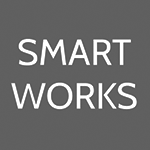Women In Finance Charter – THE BLUEPRINT REPORT – PILLAR 1 RECRUITMENT
The Women In Finance Charter (WIFC) Blueprint Document released in 2022 was originally focused on gender equity, however it is common belief that the four reinforcing pillars can be used by companies of any size in meeting their whole diversity, equity and inclusion targets.
The blueprint was structured into four reinforcing pillars; Recruitment , Retention & Promotion, Culture & Behaviour and Embedding Diversity Equity & Inclusivity.
The report identified that for Pillar 1 – Recruitment that the best in class organisations have a centralised recruitment process, which is monitored for bias and is focused on a skills over experience approach. These companies have identified and have access to a wider talent pool than the conventional roots and are committed to interview females of 50% for roles regardless of level.
The blueprint identified a number of trends and challenges which need to be overcome to accelerate gender representation in a company. Firstly, the recruitment process journey and experience was identified as being very different for women, for example it was identified that women take up to 40 days longer to complete the recruitment process.
At junior level, financial services organisations are already successfully accessing more women by centralising recruitment processes, looking for new pools of talent and offering incentives (e.g., scholarships), however at more senior levels the challenge is more difficult primarily because of the need to fill a role quickly. Creating depth across every level of your talent pool can help address this, alongside a more strategic long term planning for more senior positions and providing transparency on pay structures which negates the need for salary negotiations.

AVERAGE DAYS TO HIRE
BEHAVIOURAL BARRIERS
There are behavioural and structural barriers which can have an impact of recruiting women which range from a narrower talent pool with under-representation of females in some academic subjects, through to unintended bias of recruitment content, immediate need for roles to be filled and the failure to identify early high performers.
The blueprint suggests a number of ideas to improve your recruitment process. For those companies leading the way in an effective DE&I recruitment process these include:
- Career returner programmes
- Organised Women only recruitment events
- Scholarship & Outreach programmes
- De-gender all communications and processes
- Maintaining a fully diverse shortlist right through to interview stage which includes 50% female representation
- External talent mapping
- Use of Blind name and characteristic CVs
- Use of psychometric testing over CVs
- Extend hiring timelines for Senior Management roles
- Pay parity
- Accountability at Executive Board Level on DE&I
CASE STUDY EXAMPLE
Mastercard run a 12 week returners programme for both women and men who have taken a career break. This included an adaptive interview process with question which required a non-work related response, a November start date to enable parents to embed children into school, and the open celebration of returners and their managers profiling success.

WHERE DO YOU STAND?
The blueprint identified a number of key questions for companies to do a self-assessment of their recruitment.
What structural biases exist in your organisation and how are you addressing these?
Are you accessing enough sources for a fully diverse talent pool?
How are you meeting the recruitment needs of women?
Are your senior executives accountable for recruiting a fully diverse workforce?
What is your 5 year recruitment goal?
WHAT IS YOUR NEXT STEP?
Firstly if you haven’t read the WIFC Blueprint make sure you get a copy of it, one of our team would be happy to send you across a digital version. The blueprint report helps you identify the key DE&I dimensions, shows ‘best in class’ examples, and provides you with an actionable toolkit to accelerate your journey.
Contact us
Campbell & Fletcher Limited
10th Floor
3 Hardman Street
Manchester
M3 3HF
Accreditations





